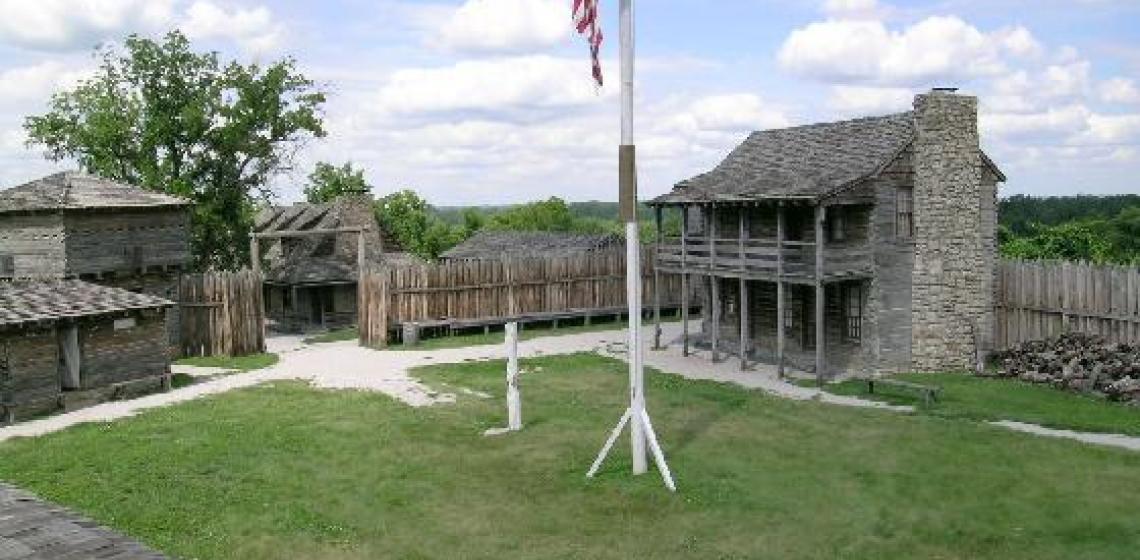Fort Osage (US)

Fort Osage (also known as Fort Clark or Fort Sibley) was part of the United States factory trading post system for the Osage Nation in the early 19th century near Sibley, Missouri. The fort ceased operations in the 1820s as the Osage in subsequent treaties ceded the rest of their land in Missouri. A replica of the fort was rebuilt on the site in the 1950s.
Fort Osage was the second U.S. outpost built following the Louisiana Purchase. The site, overlooking the bends and currents of the Missouri River, was first observed on June 23, 1804 by Clark during the Voyage of Discovery as a likely spot for a fort.
The Osage ("...so tall and robust as almost to warrant the application of the term gigantic...) in exchange for access to the trading post above the Missouri River in 1808 in the Treaty of Fort Clark ceded all of their lands east of the fort in Louisiana Territory effectively leaving them with a small band of territory on the extreme western border of Missouri.
During its nineteen years of existence, Fort Osage received explorers and dignitaries, trappers, traders and the great Native American leaders. Today's Fort is a reconstruction from original plans still in existence in Washington, D.C.
